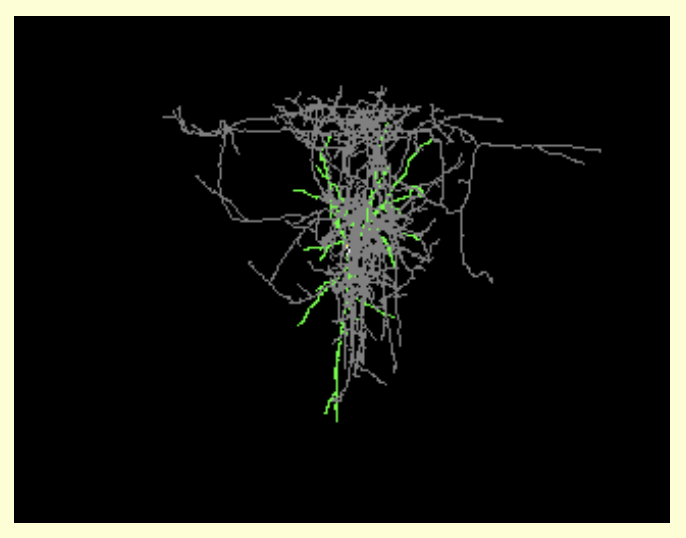URL: http://www.brenda-enzymes.org/
Proper Citation: BRENDA (RRID:SCR_002997)
Description: Main database of functional biochemical and molecular enzyme data that provides access to seven interconnected databases. It contains 2.7 million manually annotated data on enzyme occurrence, function, kinetics and molecular properties. The majority of the data are manually extracted from the primary literature. Each entry is connected to a reference and the source organism. Enzyme ligands are stored with their structures and can be accessed via their names, synonyms or via a structure search. FRENDA (Full Reference ENzyme DAta) and AMENDA (Automatic Mining of ENzyme DAta) are based on text mining methods and represent a complete survey of PubMed abstracts with information on enzymes in different organisms, tissues or organelles. The supplemental database DRENDA provides more than 910 000 new EC number-disease relations in more than 510 000 references from automatic search and a classification of enzyme-disease-related information. KENDA (Kinetic ENzyme DAta), a new amendment extracts and displays kinetic values from PubMed abstracts. The integration of the EnzymeDetector offers an automatic comparison, evaluation and prediction of enzyme function annotations for prokaryotic genomes. The biochemical reaction database BKM-react contains non-redundant enzyme-catalyzed and spontaneous reactions and was developed to facilitate and accelerate the construction of biochemical models. The content covers information on function, structure, occurrence, preparation and application of enzymes as well as properties of mutants and engineered variants. BRENDA provides viewing options such as the display of the statistics of functional parameters and the 3D view of protein sequence and structure features. Furthermore a ligand summary shows comprehensive information on the BRENDA ligands. The enzymes are linked to their respective pathways and can be viewed in pathway maps. The disease text mining part is strongly enhanced. It is possible to submit new, not yet classified enzymes to BRENDA, which then are reviewed and classified by the International Union of Biochemistry and Molecular Biology. A new SBML output format of BRENDA kinetic data allows the construction of organism-specific metabolic models. The enzymes are classified according to the Enzyme Commission list of enzymes. Some 5000 different enzymes are covered. Frequently enzymes with very different properties are included under the same EC number. Although they intend to give a representative overview on the characteristics and variability of each enzyme the Handbook is not a compendium. The reader will have to go to the primary literature for more detailed information. Naturally it is not possible to cover all the numerous literature references for each enzyme (for some enzymes up to 40000) if the data representation is to be concise as is intended. The data collection is being developed into a metabolic network information system with links to Enzyme expression and regulation information. BRENDA SOAP Webservice is available.
Abbreviations: BRENDA
Synonyms: Brenda: The Comprehensive Enzyme Information System, BRaunschweig ENzyme Database, Brenda: Enzyme Database, BRENDA: The Comprehensive Enzyme Information System
Resource Type: service resource, data or information resource, storage service resource, analysis service resource, database, production service resource, data analysis service, data repository
Defining Citation: PMID:23203881, PMID:21062828, PMID:14681450, PMID:12850129, PMID:11796225, PMID:11752250
Keywords: enzyme, metabolic pathway, protein sequence, protein structure, genome, structure, function, annotation, kinetics, molecular property, occurrence, preparation, application, mutant, variant, pathway, ligand, web service, sequence, substructure, FASEB list
Expand Allis related to |
|
has parent organization |
|
is parent organization of |
We found {{ ctrl2.mentions.total_count }} mentions in open access literature.
We have not found any literature mentions for this resource.
We are searching literature mentions for this resource.
Most recent articles:
{{ mention._source.dc.creators[0].familyName }} {{ mention._source.dc.creators[0].initials }}, et al. ({{ mention._source.dc.publicationYear }}) {{ mention._source.dc.title }} {{ mention._source.dc.publishers[0].name }}, {{ mention._source.dc.publishers[0].volume }}({{ mention._source.dc.publishers[0].issue }}), {{ mention._source.dc.publishers[0].pagination }}. (PMID:{{ mention._id.replace('PMID:', '') }})
A list of researchers who have used the resource and an author search tool
Find mentions based on location

{{ ctrl2.mentions.errors.location }}
A list of researchers who have used the resource and an author search tool. This is available for resources that have literature mentions.
No rating or validation information has been found for BRENDA.
No alerts have been found for BRENDA.
Source: SciCrunch Registry





